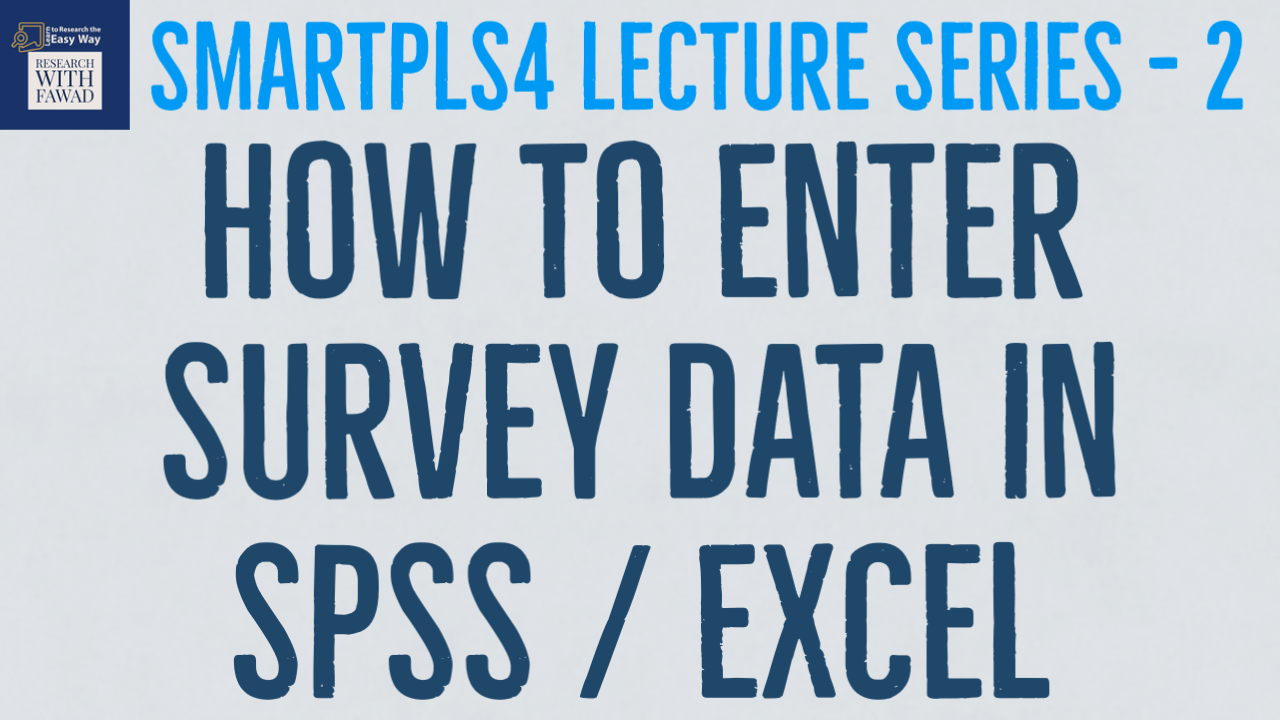How to Enter Data in SPSS Or Excel
This session discusses in detail how to add survey data in SPSS and Microsoft Excel.

#SmartPLS4 Series
After the introduction to the SmartPLS4 series. This session is focused on learning how to enter data in SPSS and Excel
Data Entry after Data Collection
Once the data is collected, the next step is to enter data in an appropriate software. The data is later utilized for data analysis and drawing conclusions. The session is focused on learning how to enter data in IBM SPSS or Microsoft Excel.
Entering Data in SPSS and Excel: A Step-by-Step Tutorial
In the preceding session, the Smart PLS4 series was introduced, and now the focus is on working with a specific model. Assuming that data has been successfully collected, the next step involves entering this data into either SPSS or Excel. For instance, let’s consider a questionnaire with constructs representing organizational learning and items measuring these constructs.
Coding Items in SPSS:
The initial step is to code the items systematically. For example, items measuring organizational learning could be coded as “ol1,” “ol2,” and so on. In SPSS, navigate to the Variable View, where you can name and define all variables. Additionally, it is advisable, given SPSS’s statistical nature, to represent variables in numeric terms. Assign numeric values to the scale options, such as 1 for strongly disagree, 2 for disagree, and so forth.
Defining Variables in SPSS:
In SPSS, define each variable by specifying its type (nominal, ordinal, or scale). It’s recommended to combine interval and ratio variables into the “scale” category. Also, consider demographic variables like gender and age, assigning numeric values for representation.
Entering Data:
Once variables are defined, enter the data systematically, referring to numbered questionnaires.
Error Checking:
After entering data, perform a thorough check for errors. While specific error-checking procedures are not outlined in this tutorial, errors checking includes assessing missing values, respondents bias/misconduct. It is essential to validate data for accuracy. Checking for minimum and maximum values can be achieved using relevant formulas in Excel.
Importing Data into Smart PLS4:
Smart PLS4 conveniently accepts data files from SPSS, Excel, and CSV formats. After entering and checking data in SPSS or Excel, save the file in the desired format (e.g., CSV) and import it into Smart PLS4 for further analysis.
This tutorial provides a foundational understanding of how to enter data into SPSS and Excel, emphasizing systematic coding, variable definition, and error checking. Subsequent tutorials will delve into defining projects and importing data into Smart PLS4 for comprehensive analysis.
Video Tutorial
Additional SmartPLS4 Resources
- A Basic and Simple Model in SmartPLS4
- Basic SEM Concepts – Convergent and Discriminant Validity
- Basic Structural Equation Modelling (SEM) Concepts
- Categorical Moderation Analysis using SEMinR
- How to Assess Construct Reliability?
- How to Assess Convergent Validity (Construct validity)
- How to Assess Discriminant Validity (Construct validity)
- How to Assess Reflective-Reflective Higher Order Construct
- How to Design a Measurement Model?
- How to Solve Discriminant Validity Issues
- How to Use Necessary Condition Analysis in SmartPLS4?
- Reflective-Formative Higher-Order Model using SmartPLS4
- Simple Structural Model in SmartPLS4
- SmartPLS4 Tutorials Series Introduction
- Steps in Data Analysis
- What is a Formative Construct?